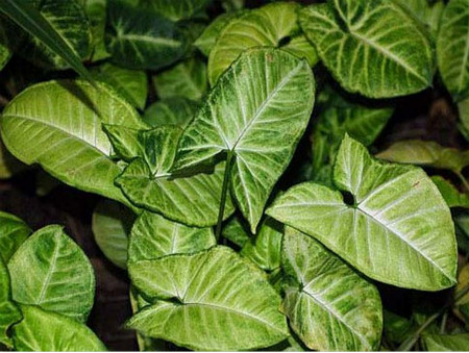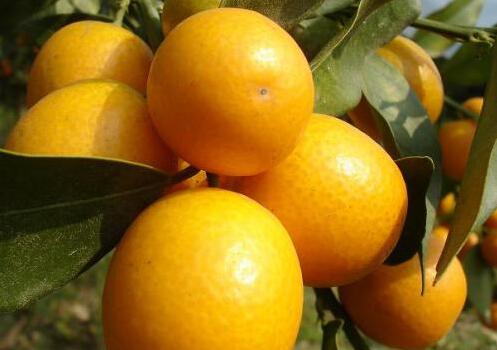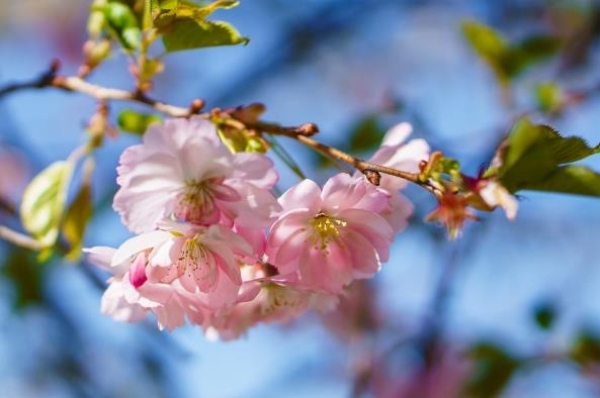What details should be paid attention to in indoor breeding of white butterflies?
1. Avoid placing white butterfly plants in indoor locations where children can reach them.
Children's cognitive ability is low, and they are always curious about strange things, especially when they are young, they like to eat casually. If a child accidentally eats the leaves of a white butterfly in the course of playing, it is very likely to cause life danger. Therefore, even if it is really indoor breeding, it is necessary to choose a location that is out of the reach of children to raise white butterflies.
2. Pay attention to prevent juice spatter during pruning
White butterflies grow luxuriantly. Sometimes, in order to maintain the beauty of potted plants, white butterflies should be trimmed. Gloves and masks must be worn before pruning to prevent splashing of juice or pruning of branches during pruning. Hands should also be washed and disinfected as soon as possible after pruning.
3. The falling leaves of white butterflies should be dealt with in time.
White butterfly leaves are broad, which can increase air humidity and absorb large amounts of formaldehyde and ammonia. Therefore, many people choose to hang and culture, but in the process of breeding, they will inevitably encounter the problem of yellowing or decay of leaves. At this time, the fallen waste leaves should be cleaned up in time to avoid juice overflow and cause danger.

The above is the editor's introduction about the white butterfly, the white butterfly is toxic, but we are safe as long as we are careful not to come into contact with its juice in the breeding process. If you want to know more about plants, please pay more attention to the four Seasons Plant Network!
What should I do if I accidentally encounter the juice of a white butterfly?
If in the process of breeding, accidentally touch the skin, or the entrance, splashing on the eyes, etc., you should immediately use a lot of water to wash, to assist some cool liquid, and drink more boiled water for exercise, sweating and urination and other simple self-rescue methods, if the effect is not obvious, then you need to be sent to the hospital in time to avoid delay in treatment.
Now that we know that white butterflies are poisonous, what details should we pay attention to in order to safely breed white butterflies? Next we will introduce how to breed white butterflies safely indoors!
Do you have Phalaenopsis which is suitable for indoor culture?
Phalaenopsis is a kind of plant suitable for indoor culture, and its flowers are similar to butterflies. Elegant, elegant. It has the reputation of "Queen of Lanzhong" in the flowers. The flower of Phalaenopsis is the most ornamental part. As most of Phalaenopsis are produced in humid Asia, which determines the growth characteristics of Phalaenopsis, ventilation, moderate temperature, high humidity environment is very suitable for breeding Phalaenopsis. So, how to raise Phalaenopsis?
I. introduction of butterfly orchids
Butterfly, alias orchid, Japanese iris, open throat arrow, flat bamboo orchid, sword grass, also known as Qionghua. Perennial herbs, rhizome creeping, with long branches, flowering from April to May. Scattered under forests and wet places beside streams, it is native to the vast area south of the Yangtze River in China, as well as in Japan. The flower branches spread widely and the crown is spherical. Leaves opposite, ovate or elliptic, margin denticulate, abaxially sparsely stellate hairy. There are large white sterile flowers around the inflorescence and fertile flowers in the middle. Drupe oval, the first red consequences. The florescence is April.
Butterfly flower is a common name for herbaceous flowering plants. The flower consists of a perianth consisting of 6 petal-like parts, 3 to 6 stamens, and an ovary at the bottom. It is named after the messenger of God and the rainbow that connects the earth to other worlds. It is said that the butterfly flower saved the life of King Clowe of Frank in the sixth century-when he saw the butterfly growing in the Rhine, he speculated that the river was shallow enough to cross, thus escaping from the enemy. Butterfly flowers bloom in April and May. The flowers are as big as plates and as white as jade. Cymes grow at the end of branches, with eight sterile flowers developed from sepals and bisexual florets in the middle. Butterflies grow in Japan, China and most countries with mild climates. Distributed in Sichuan, Gansu, Jiangsu, Henan, south of Shandong and other places.
Second, the function of Phalaenopsis
1. It has a strong role in beautifying the home environment. Its plants are very peculiar, with neither stolons nor pseudobulbs. Each tree produces only a few broad leaves as thick as a spoon, stacked alternately on top of the base. The thick white air root is exposed around the leaves, and some cling to the outer wall of the flowerpot, which is full of natural wild interest. In the Spring Festival, a foot-long pedicel is drawn from the axils of the leaves and blossoms one by one. Each flower has 5 dusks, with lip flaps embedded in the middle. The flowers are bright, including pure white, goose yellow, tripping red, lilac, orange red and azure blue. Many varieties have both two-color or tricolor, some seem to be embroidered with stripes, and some seem to be sprayed with uniform color spots, with seven or eight flowers per branch, and more than twelve or three, which can be watched continuously for 60 or 70 days. With such a beautiful appearance, do you still resist it?
2. It can make the house full of life from the outside to the inside. The name "Phalaenopsis" has a connotation that many people do not know. Phalaenopsis's scientific name means "like a butterfly orchid" in Greek. It can absorb nutrients in the air and survive, proving its dynamic role in the center of the home, flying around in the air like a butterfly, vitality and vitality are produced here, and its appearance, although it will not move, but, so beautiful and dazzling, can add a lot of atmosphere to a home, like a festival, jubilant.
3. It has a lot of interesting flower words, which makes the home style more poetic. The flower language of Phalaenopsis is that I love you and happiness is coming to you. Therefore, when many people get married, Phalaenopsis is given to the bride. For example, Phalaenopsis corresponds to the constellation: Aquarius & Sagittarius, which represents loyalty, wisdom, reason and virtue. So an emotional flower at home, it will certainly add a lot of good atmosphere to the home.
Third, how to raise Phalaenopsis
1. Phalaenopsis culture soil
Soil is essential for plant growth. When we choose to plant Phalaenopsis, it is very important to choose soil. Phalaenopsis has higher requirements for soil, such as air permeability, decay resistance, micro-acid and water. Generally, we can choose pine needles, peanut shells, bark silk, clay balls and other materials as the substrate for breeding Phalaenopsis. If you are unable to configure these materials, the editor suggests that you can buy Phalaenopsis-specific orchid soil directly from the flower market, which is more conducive to the growth of Phalaenopsis.
2. Choose the suitable temperature environment for Phalaenopsis.
The temperature is very particular for the growth of Phalaenopsis, especially for Phalaenopsis cultivated indoors, the temperature should be controlled before 25-28 degrees during the day and 18-20 degrees at night. Phalaenopsis is produced in the subtropics, so the environment of high temperature and high humidity is very suitable for the growth of Phalaenopsis (when the summer temperature is higher than 32 degrees, Phalaenopsis will directly enter the semi-dormant state, so to prevent the high temperature, when the temperature is low, the growth of Phalaenopsis will be resisted, so the appropriate temperature is also very important, if in the northern home, those who have radiators must pay attention to keep Phalaenopsis away from the radiator! In this way, excessive high temperature will affect the growth of Phalaenopsis.
3. Watering Phalaenopsis
High humidity is a favorite of Phalaenopsis. Avoid leaving Phalaenopsis in a state of lack of water, especially during its growth period. Once the frequent occurrence of water shortage will cause the leaves yellowing, and it is difficult to recover. Usually Phalaenopsis can be watered with a spray can. Water can flow down to the bottom of the basin to avoid watering too much water.
4. Regular ventilation and shading will be more beneficial to the growth of Phalaenopsis.
In the flower-growing forum, we often see the problem of growing flowers in the rotten roots of Phalaenopsis, which may also be caused by the lack of a ventilated environment. Phalaenopsis is delicate, so choosing a ventilated environment will be more conducive to its growth. The muggy environment is not suitable for breeding Phalaenopsis, especially in summer in the south, pay attention to shading Phalaenopsis. Phalaenopsis is an epiphytic orchid with a sexual preference for semi-yin. The temperature is low in winter, so it should be ventilated at noon, but the tuyere should not be blown directly to the orchid plant. In spring and autumn, we should pay attention to protect orchids from light. In this way to ensure good lighting and ventilation, the flowers will be more delicate and beautiful!
Finally, the above is the detailed answer of how to raise butterfly orchids for you. I hope it will be helpful to the majority of flower friends. Phalaenopsis is one of the plants suitable for indoor culture. The flowers are butterfly-shaped, elegant and elegant, and enjoy the reputation of "queen of orchids". However, most of Phalaenopsis are produced in humid Asia, which determines the growth characteristics of Phalaenopsis. Must be ventilated, breathable, moderate temperature, high humidity environment can be said to be an excellent environment for breeding Phalaenopsis.
- Prev

Culture methods of kumquat trees
1. Kumquat likes sunshine and warm and humid environment, so it is best to put the golden orange tree in a sunny place, but pay attention to moderate light in summer, so that the golden orange tree will grow well. 2. Watering kumquat is not resistant to water and moisture, so there can be no stagnant water in watering, otherwise the golden orange tree will rot its roots.
- Next

The cultivation method of cherry blossoms
Cherry blossoms in potted planting, to timely supplement nutrients, fertilization twice a year, once after the fall of flowers, once for winter fertilizer. And to keep the soil moist, frequent watering, about 8 to 10 days to water, but also to ensure that there is no water at the bottom. Cover the soil with grass to reduce evaporation
Related
- Fuxing push coffee new agricultural production and marketing class: lack of small-scale processing plants
- Jujube rice field leisure farm deep ploughing Yilan for five years to create a space for organic food and play
- Nongyu Farm-A trial of organic papaya for brave women with advanced technology
- Four points for attention in the prevention and control of diseases and insect pests of edible fungi
- How to add nutrient solution to Edible Fungi
- Is there any good way to control edible fungus mites?
- Open Inoculation Technology of Edible Fungi
- Is there any clever way to use fertilizer for edible fungus in winter?
- What agents are used to kill the pathogens of edible fungi in the mushroom shed?
- Rapid drying of Edible Fungi

